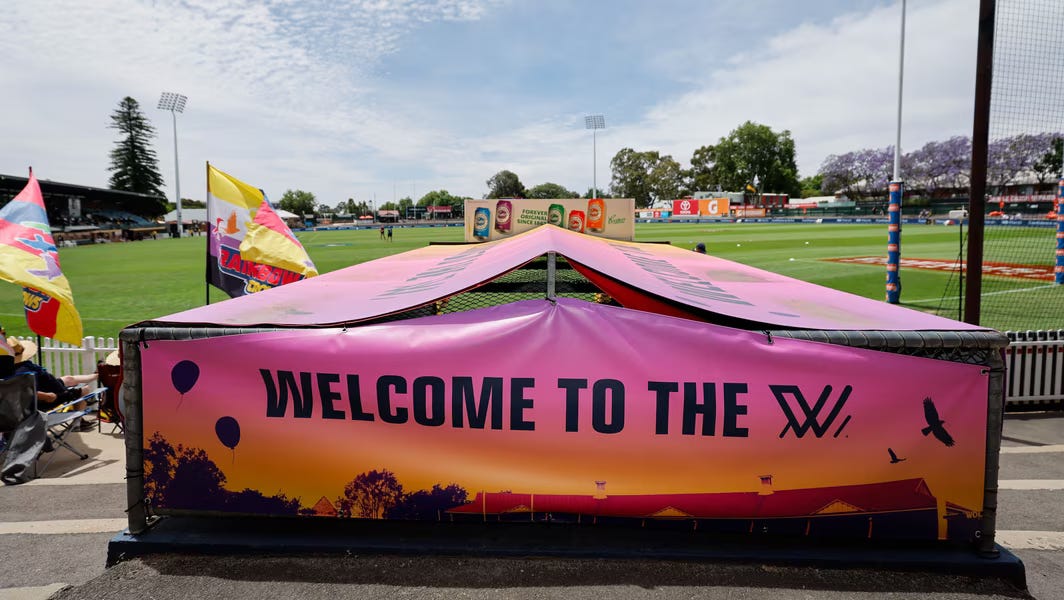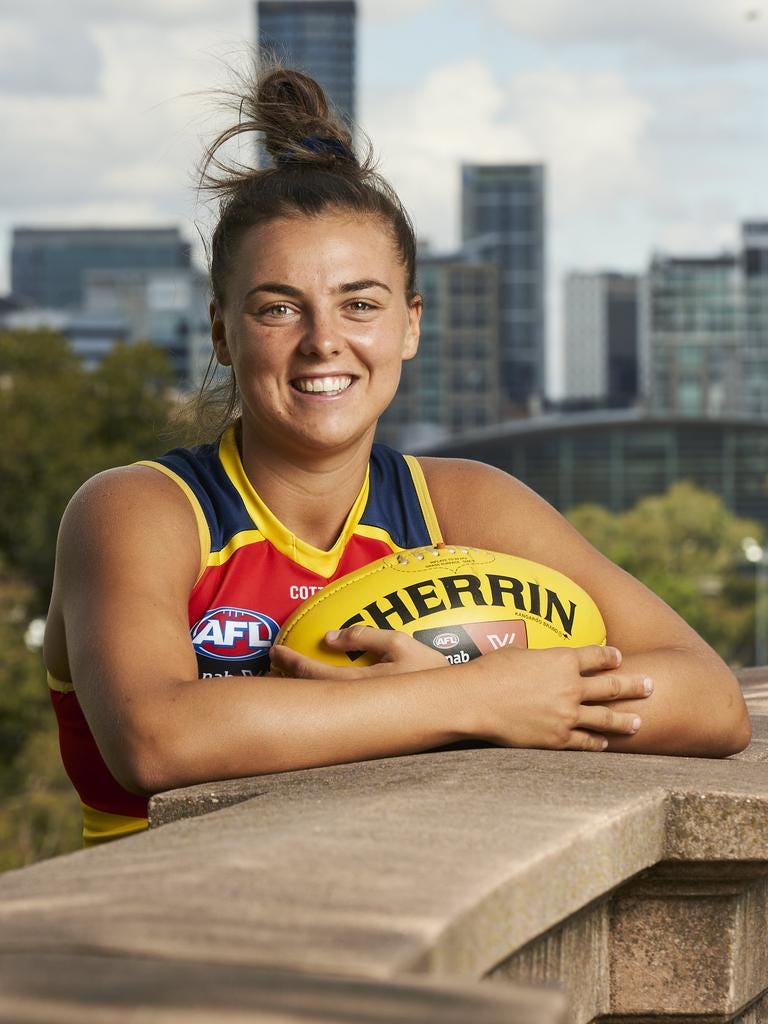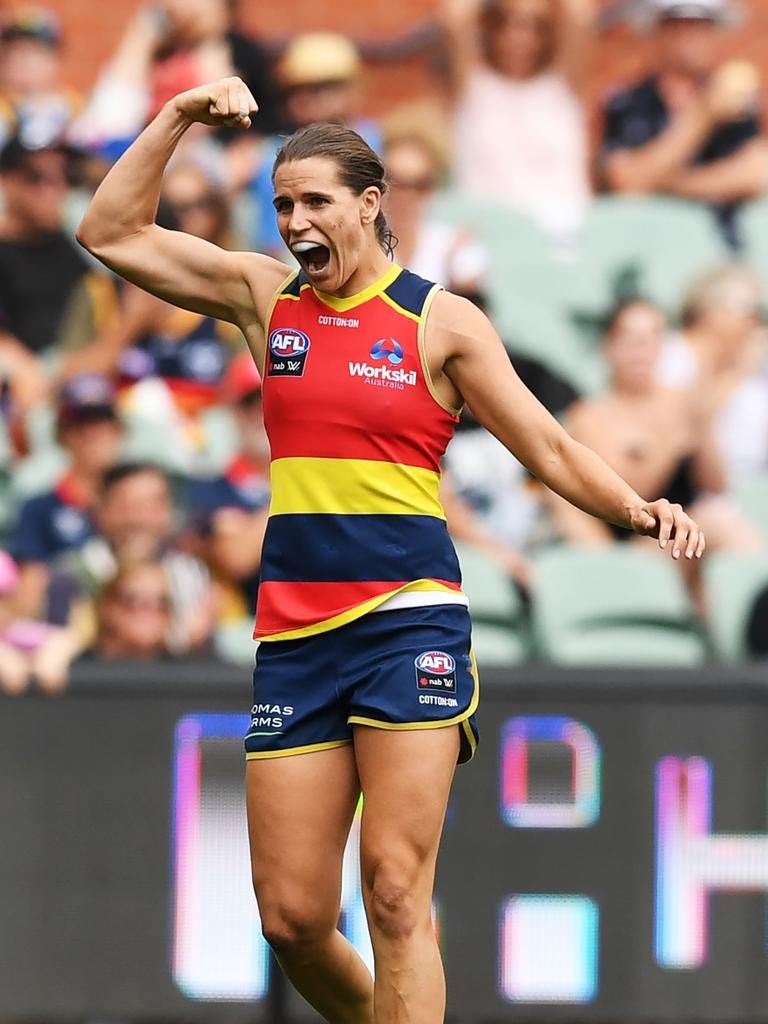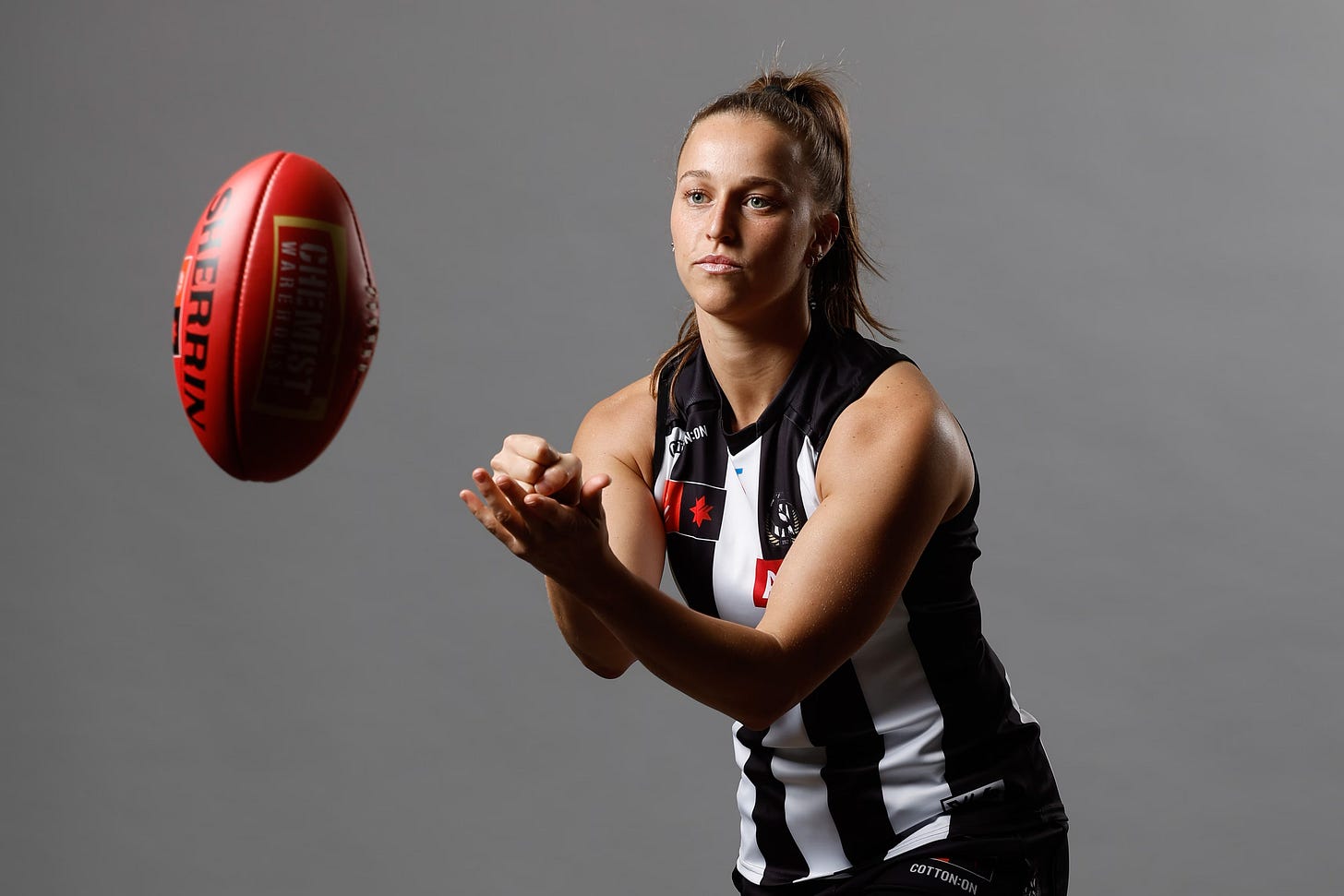There’s a harsh truth we need to talk about: the AFLW often feels like it’s being set up to plateau. The 2025 fixture release makes that frustration painfully obvious — the league hasn’t increased its use of tier-one stadiums this season and there are no regular AFLW fixtures at the likes of Marvel Stadium, the MCG or Adelaide Oval. The AFL says the focus is on filling 5,000–12,000-capacity venues to create atmosphere, but that also reads like an institutional decision to keep the product contained rather than expand its reach.
That matters. If you want a competition to grow you put your biggest fixtures where the most people can see them and where the event feels big. Instead we’re seeing season openers, marquee rivalries and even the grand final funnelled into boutique and regional venues — which, crucially, limits capacity and the spectacle around those matches. Players and figures have publicly urged the AFL to lock in Marvel Stadium (53,000 seats) as a permanent grand-final site — a signal that some inside the game know what a step up would look like.
The numbers say “interest is growing” — so why hold it back?
Look at the crowds and viewing figures and the story is not “no one cares.” It’s more nuanced:
Across AFLW fixtures listed in stadium records for 2025, total reported attendance sits around the low hundreds of thousands with an average crowd in the single thousands — Austadiums lists an average of ~2,692 per match in the 2025 dataset and a season total around 290,700 across 108 events, with a clear ceiling on what smaller venues can deliver. (Highest single crowd in the dataset: 12,122 at Ikon Park for the grand final.) Those numbers show a healthy spike for big matches but modest averages that are partly self-inflicted by limiting capacity.
On broadcast and streaming, AFLW’s footprint is growing: the 2024 season was the highest-streamed AFLW season on Foxtel Group platforms — reportedly up ~61% year-on-year on Kayo/Foxtel/BINGE — which argues viewers will tune in when the product is presented well. That streaming growth is the exact lever the AFL should be using to justify stadium upgrades and bigger showcase events.
Put bluntly: the demand is there for bigger moments. But because the league is concentrating on smaller-capacity venues, the potential headline-making attendances never get the chance to exist en masse, and the optics feed a lazy narrative — “AFLW is too small” — that becomes a self-fulfilling prophecy.
The players who prove the product is worth the risk
If you want examples of game-defining personalities who draw attention and deliver highlight moments, here are the players who show how big the AFLW can be when it’s given a stage:
Ebony Marinoff (Adelaide) — Marinoff’s trajectory is a blueprint for AFLW stardom: NAB Rising Star in the inaugural years, multiple All-Australian nods and a long record of elite midfield performances. She capped a career-best 2024 by winning the AFLW Best & Fairest, cementing herself as one of the competition’s genuine elite and a marketable face for the sport. If you’re arguing the AFLW lacks household names — Marinoff is one of them.
Chelsea Randall (Adelaide) — A warrior and leader, Randall has been one of the competition’s most respected figures: a multi-time All-Australian, club champion and long-serving captain before stepping down into a veteran leadership role. She’s the sort of polarising, respected on-field presence who helps sell big games and deserves headline venues when the Crows are involved
Ruby Schleicher (Collingwood) — A defensive dynamo who has earned All-Australian recognition and club best-and-fairest credentials, Schleicher is a modern lockdown defender with highlight-reel intercepts — a player whose presence can elevate a fixture into a tactical talking point and a must-see match. Collingwood’s recent promotion of her into leadership and her on-field performances show she’s part of the AFLW’s next generation of stars.
Madison (“Maddy”) Prespakis (Essendon) — A genuine midfield superstar who carried Carlton and then Essendon with elite disposal numbers and big-game moments; Prespakis remains one of the competition’s most bankable players (All-Australian, Best & Fairest winner in 2020, huge disposal averages). Her move to Essendon and subsequent profile growth underlines the AFLW’s capacity to build stars who translate to TV audiences and attendances.
Jasmine Garner & Ash Riddell (North Melbourne) — The Kangaroos’ dominant 2024 campaign and grand-final performance — with Garner starring (huge disposal and tackle counts in the GF) and the team packing the stands — is proof that when dominance and star power combine you get sell-out, headline moments (the grand final that drew 12,122 at Ikon Park is a recent case in point). That’s the kind of narrative and spectacle that belongs at larger venues to build new traditions.
Why player stories matter
These athletes aren’t just “good players”; they’re story generators. They create rivalries, talking points and social media highlight reels. Let a Ruby Schleicher intercept or an Ebony Marinoff meltdown happen in a 40,000-seat stadium (or even a 20k Marvel blockbuster) — the clip spreads faster, the crowd noise amplifies the moment, and casual viewers who tune in to see the spectacle are more likely to convert into repeat fans.
What the AFL could (and should) do differently
Stage more marquee games at bigger venues — openers, mid-season showdowns, and the grand final deserve marquee homes at Marvel/Adelaide Oval/MCG on a rotating or priority basis. Players and media have called for this. If the AFL truly wants scale, it has to take the chance.
Use streaming numbers as leverage — the 2024 streaming bump is an argument for investing in stadium exposure and marketing around those big games.
Create consistent “AFLW event” weekends — predictable slotting (e.g., a standalone marquee night or Sunday big-game window) helps fans form habits — and habits = attendance growth. The current patchwork schedule makes it harder to build routine followings.
Experiment — but properly — trial a Marvel or Adelaide Oval grand final, advertise it nationally, and measure. If it flops, learn and adapt. But don’t hide the league from the scale it needs to become mainstream.
Final thought — give the game a chance to breathe
I get the pragmatic side: growth has to be managed, talent pools take time to deepen, and not every ground will fill to the rafters. But there’s a difference between managing growth and handcuffing it. Right now the AFL’s venue strategy is constraining the thing it says it wants to grow. Let the show be big sometimes. Let the grand final feel like a proper finale. Put marquee players in marquee settings and back them with marketing. If the AFLW doesn’t grow fast enough after that, at least the league can say it tried.
Women’s sport matters. AFLW is worth the risk. Give it the stadiums, the nights, the marketing and the belief — then sit back and watch what the players you already have can do with a proper stage.
Josh Robinson
Founder and Lead Dude-Man-Guy
The Hive






